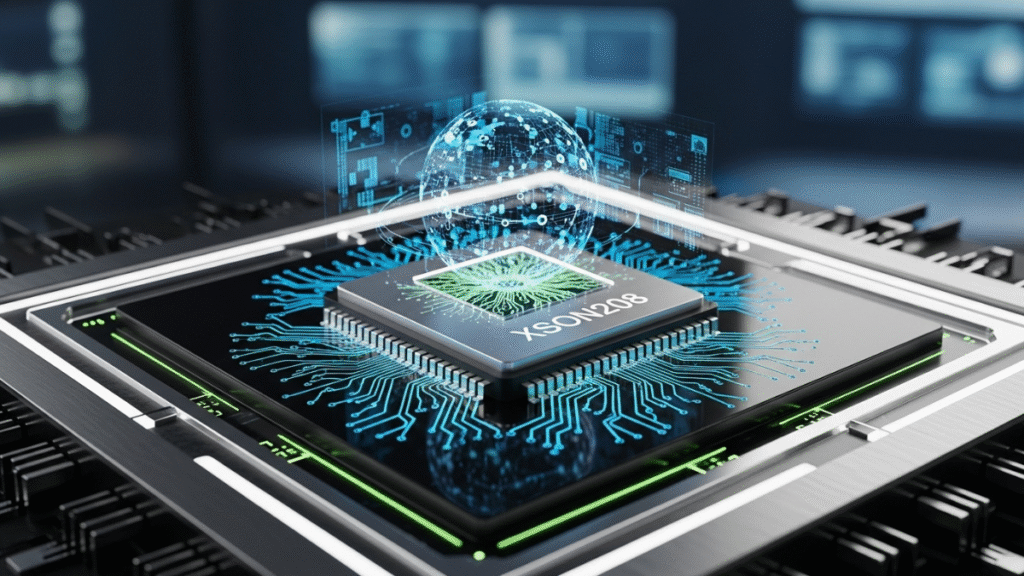Introduction to XSON208 and its components
The world of technology is constantly evolving, and at the forefront of this evolution is a remarkable component known as XSON208. This innovative piece has begun to transform various industries, making waves far beyond its initial design. With its unique architecture and impressive capabilities, XSON208 has become an essential element in modern technological applications.
From electronics to renewable energy systems, its influence is both profound and wide-ranging. As we explore the intricacies of XSON208—its components, historical background, key features, and real-world applications—we’ll uncover the potential it holds for our future innovations. Buckle up for an exciting journey into the world of XSON208!
Historical background and evolution of XSON208
The XSON208 has a fascinating history that traces back to the early days of semiconductor development. Initially conceptualized in research labs, its design aimed to tackle specific challenges in electronic circuits.
Over the years, as technology advanced, so did the capabilities of XSON208. Engineers and developers refined its architecture for improved efficiency and performance. This evolution reflected broader trends in miniaturization and integration within the electronics industry.
By adapting to new materials and manufacturing techniques, XSON208 became more versatile. Its ability to operate under varying conditions made it indispensable across diverse applications.
As demand grew for high-performance components in modern devices, the XSON208 continued evolving into what we see today: a robust solution tailored for contemporary technological needs.
Key features and advantages of XSON208
XSON208 stands out in modern technology due to its exceptional features. One of its most notable advantages is high efficiency. This translates into reduced energy consumption, making it an eco-friendly choice.
The compact design allows for seamless integration into various devices. Its lightweight nature ensures that manufacturers can create sleek products without compromising functionality.
Another significant feature is its scalability. XSON208 adapts easily to a range of applications, from consumer electronics to industrial machinery.
Moreover, the robust performance under diverse conditions enhances reliability. Users benefit from consistent results even in challenging environments.
The ease of implementation reduces development time and costs for engineers. Companies can bring their innovations to market faster while maintaining quality standards.
Applications in the electronics industry
The electronics industry has embraced xson208 with open arms. This advanced component plays a pivotal role in enhancing device performance. Its ability to function efficiently in various applications makes it indispensable.
From smartphones to smart home devices, xson208 enhances processing speed and energy efficiency. Manufacturers are increasingly integrating this technology into their products, resulting in smarter and more responsive gadgets.
Additionally, the flexibility of xson208 allows for its use in both consumer and industrial electronics. This versatility not only drives innovation but also paves the way for new product developments.
As we see rapid advancements in wearable technology, xson208 is at the forefront, powering health monitors and fitness trackers. The demand for compact yet powerful components ensures that xson208 will continue to thrive within the electronics landscape.
Use in renewable energy systems
XSON208 is making waves in renewable energy systems. Its ability to efficiently manage and convert energy plays a crucial role in optimizing performance across various setups.
Solar panels benefit significantly from XSON208 technology. By enhancing the efficiency of power conversion, it maximizes output even under fluctuating sunlight conditions. This means more usable energy for homes and businesses alike.
Wind turbines are also seeing improvements thanks to this innovative component. The adaptability of XSON208 helps in regulating power generation based on wind speed, ensuring consistent energy supply regardless of weather changes.
Moreover, integrating XSON208 into battery storage systems enhances charge management. It allows for better utilization of stored energy during peak demand periods, thus supporting grid stability.
The versatility of XSON208 opens new avenues for hybrid renewable solutions too. Combining different sources can lead to smarter and more efficient systems that cater to diverse energy needs.
Impact on transportation technology
XSON208 is making waves in transportation technology. Its advanced capabilities are transforming how we think about efficiency and sustainability.
One notable application is in electric vehicles (EVs). The integration of XSON208 improves battery management systems, leading to longer ranges and faster charging times. This leap forward encourages more people to opt for EVs, reducing carbon footprints.
Moreover, XSON208 plays a crucial role in smart transportation networks. It enhances communication between vehicles and infrastructure, paving the way for improved traffic management and safety features.
Autonomous driving technology also benefits from XSON208’s precision. With real-time data processing, vehicles can make safer decisions on the road.
As cities evolve into smart hubs, the demand for innovative solutions like XSON208 will only grow, reshaping our commuting experiences for years to come.
Role in the healthcare sector
XSON208 is making significant strides in the healthcare sector. Its precision and reliability are invaluable for medical devices that require accurate data processing.
One of its key applications lies in patient monitoring systems. The technology ensures real-time tracking of vital signs, enhancing patient care. With XSON208, healthcare providers can respond swiftly to changes in a patient’s condition.
Additionally, the integration of this technology into diagnostic equipment allows for faster and more accurate test results. This efficiency not only streamlines operations but also improves treatment outcomes.
Telemedicine has also benefitted from XSON208’s capabilities. Remote consultations and diagnostics rely on stable connections and quick data transfer, which this technology supports effectively.
Wearable health devices are another area where XSON208 shines. These gadgets monitor everything from heart rates to sleep patterns, empowering users to take charge of their health proactively.
Future possibilities for XSON208
The future of xson208 is promising and filled with potential. As technology continues to advance, so does the need for efficient components like xson208. Innovations in artificial intelligence and machine learning could leverage its capabilities for smarter devices.
Moreover, as industries focus on sustainability, xson208 might play a crucial role in developing eco-friendly solutions. Its integration into smart grids can optimize energy use across various sectors.
Research is already underway exploring new materials and designs that enhance xson208’s performance. This could lead to faster processing speeds and lower power consumption.
Collaboration between tech companies may also drive the evolution of xson208 applications. By sharing insights, they can unlock new possibilities that haven’t yet been imagined.
With ongoing advancements in connectivity technologies such as 5G, the role of xson208 will likely expand further into IoT devices, making them more responsive than ever before.
Conclusion: The potential of XSON208 in shaping modern technology
The potential of XSON208 in shaping modern technology is immense. As we delve deeper into its applications, various industries can leverage its unique capabilities to drive innovation and efficiency. From enhancing the electronics industry to optimizing renewable energy systems, XSON208 stands at the forefront of technological advancement.
Transportation technology has also begun to feel the impact of this versatile component, enabling smarter and more efficient vehicles. Furthermore, healthcare systems are evolving with improved diagnostics and monitoring solutions powered by XSON208.
While challenges exist in terms of scalability and integration, these hurdles offer opportunities for further research and development. The future possibilities seem promising as engineers and innovators continue to explore how best to utilize this powerful tool.
As we look forward, it’s clear that embracing XSON208 could lead us toward a more connected, efficient world where technology continuously evolves to meet our needs.






